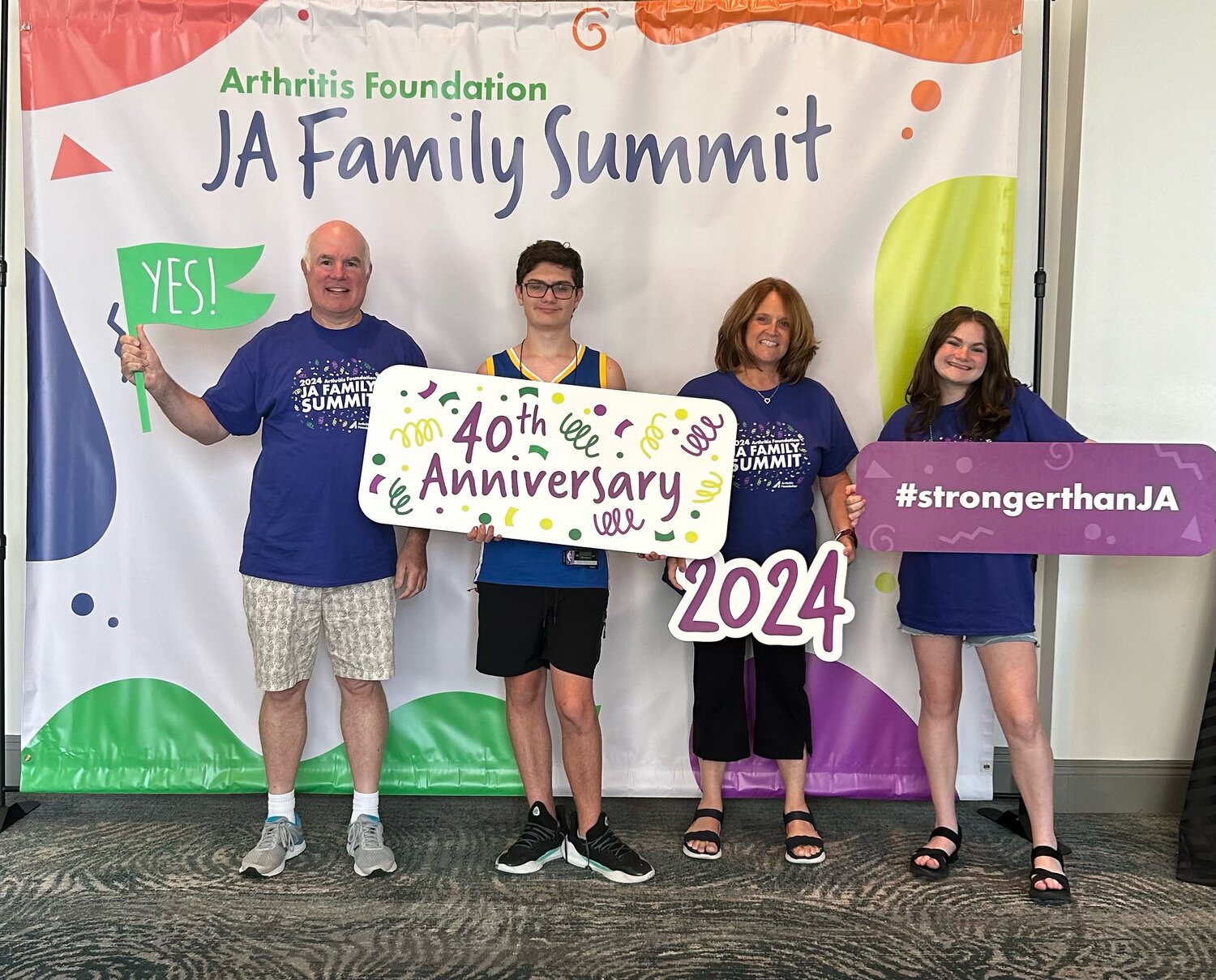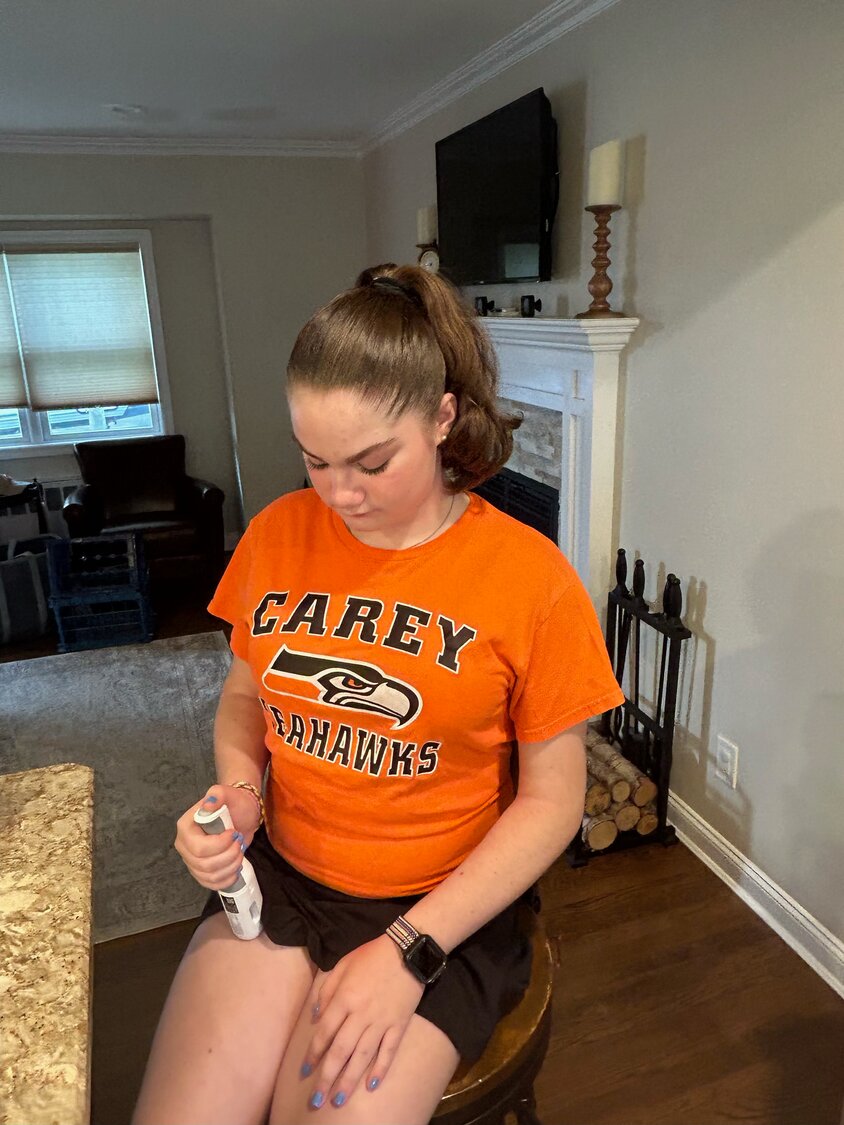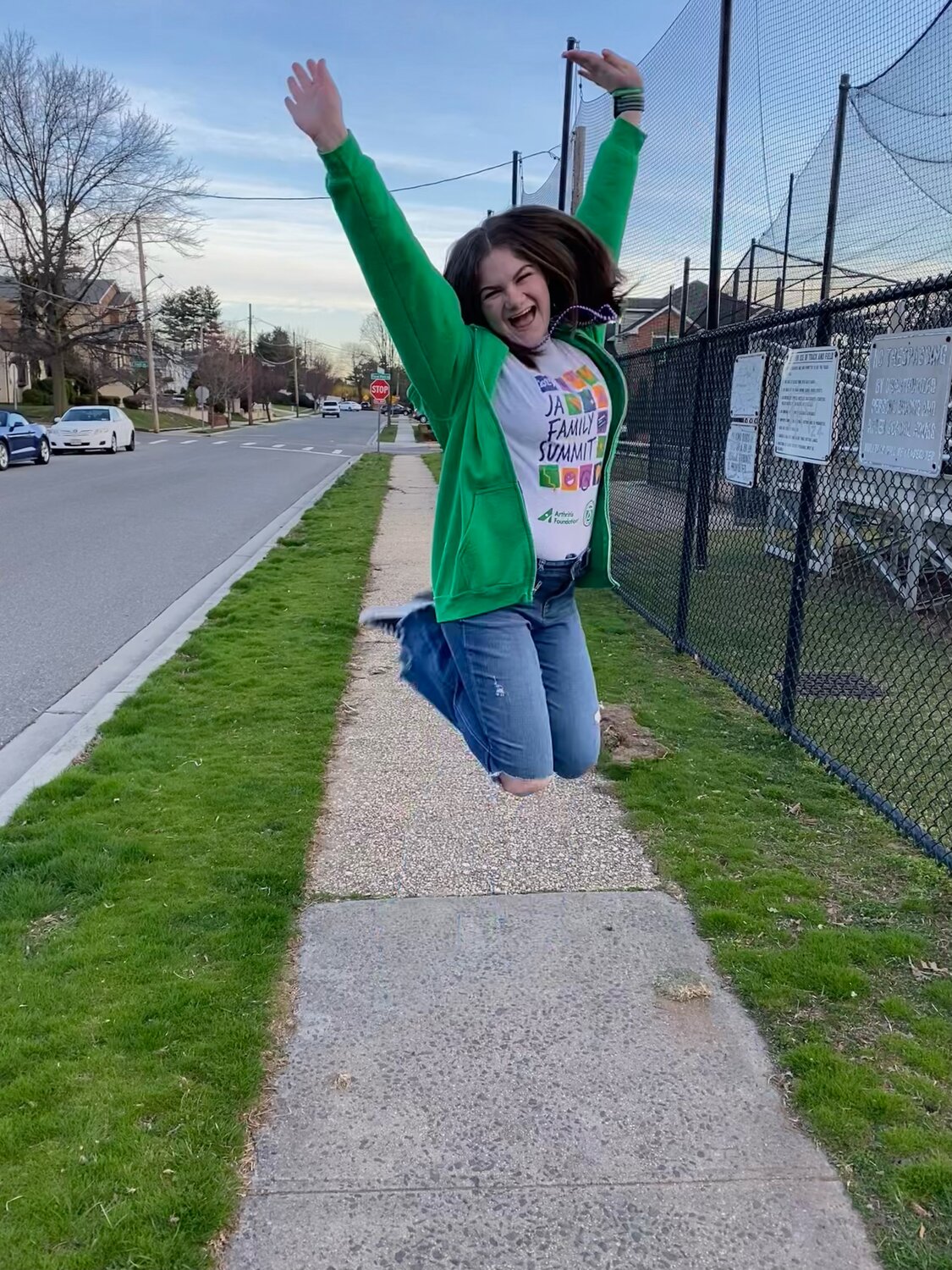Juvenile arthritis, an ‘invisible disability’
Molly Talbot, a 14-year-old from Franklin Square, hopes to become an elementary school teacher one day. She enjoys playing the clarinet, singing, and performing in musical theater and color guard, is on the High Honor Roll and is a member of the Junior National Honor Society.
Molly is also one of thousands of children in the United States who have been diagnosed with juvenile idiopathic arthritis, a form of chronic arthritis that affects roughly one in every 1,000 children younger than 16, according to the American College of Rheumatology.
Roughly 220,000 children under 18 in the U.S. have arthritis, according to the Centers for Disease Control and Prevention. The disease causes pain, stiffness, joint or body swelling and lifelong joint damage. Roughly 60 million adults in the U.S. have arthritis, according to the Arthritis Foundation.
“It’s such an invisible disability, but it’s one that can really change lives in ways that nobody should have to go through,” Molly said.
Three years ago, she broke her ankle playing softball. The fracture healed, but Molly’s mother, Deborah Talbot, said that the pain just kept creeping up on her. She started playing softball again, this time with braces and tape to try to alleviate the pain, but to no avail.
When Molly walked across the stage at her elementary school graduation in 2022, when she was 12, she was limping, and Deborah noticed that her knees were swollen. Molly’s father, John Talbot, suggested that she undergo magnetic resonance imaging, known as an MRI, and doctors found that she had joint damage. So the Talbots embarked on a journey to educate themselves about arthritis and how it affects kids Molly’s age.
“I think people just don’t get what arthritis is all about — I certainly didn’t,” John said. “It’s an autoimmune disease that can give her some discomfort in her joints, but it can affect any and all other body systems. And that’s the scary part, is for a child, what’s her future like? What’s the next body function that could be affected by this?”
When Molly was initially diagnosed, she was prescribed the medicine methotrexate, a chemotherapy and immunosuppressive drug used to treat cancer, rheumatoid arthritis and psoriasis. It is self-injected, and she decided to administer it on Friday nights, so it wouldn’t affect the rest of her school week — but she would be exhausted the whole weekend, with nausea and fatigue.
“She could not walk up the block when she was continually sick,” Deborah said.
Since then, Molly has been doing better on a different medication, Enbrel, a biologic treatment made from living cells that helps relieve symptoms of rheumatoid arthritis. She now gives herself an injection on Sunday nights, but the process can take anywhere from five minutes to an hour.
“It’s a lot of mind racing, of actually getting myself to give myself the medication,” she said, “which can be really draining, especially on a Sunday night, before you go to school the next day and have to deal with the next full week of school. It’s just an extra thing that most kids my age don’t have to go through.”
This disorder can take a toll on Molly and her family. “We roll the dice every day with medication, you know, we’re like ‘OK, this is a wonder drug,’” Deborah said. “But we’ll hear many stories that it only lasts for so long, and that it may be something different or it may go away, which is what we hope for, but that isn’t clear. That’s why we have to continue to raise awareness about it.”
Molly says she feels much happier now than she did after her initial diagnosis two years ago. In seventh grade, she couldn’t participate in gym class, but she was able to play in eighth grade — a “little win” that counts even more for her.
There aren’t many pediatric rheumatologists in the U.S. — roughly 350, according to the American College of Rheumatology. “Many states go without one,” Deborah said. “So now there are all of these kids that go undiagnosed.”
Many affected families have to travel far and wide to meet with a doctor. The Talbots drive three and a half hours to the Children’s Hospital of Philadelphia, leaving at 5:30 a.m. to make a 9 a.m. appointment.
There is currently no cure for arthritis — but they are looking to the Franklin Square community to help them contribute to finding one. On Sept. 7, neighbors can stop by the Franklin Square and Munson Fire Department, on Liberty Place, from 9 a.m. to 3 p.m. to have their car washed when they contribute $10 to the Talbots’ Arthritis Foundation fundraiser. The rain date is Sept. 8. The Talbots hope to have 100 cars show up, and to raise $1,000.
“Every single dollar helps, and that’s really what our message is,” John said.
“People don’t understand that kids get it,” Deborah said of arthritis. “They don’t understand that it is one of the hugest crippling diagnoses in the world, and that it affects so many people without a real cure. There’s things to help manage it, but there’s nothing to cure it.”
To learn more about the Arthritis Foundation, visit Info.Arthritis.org.











